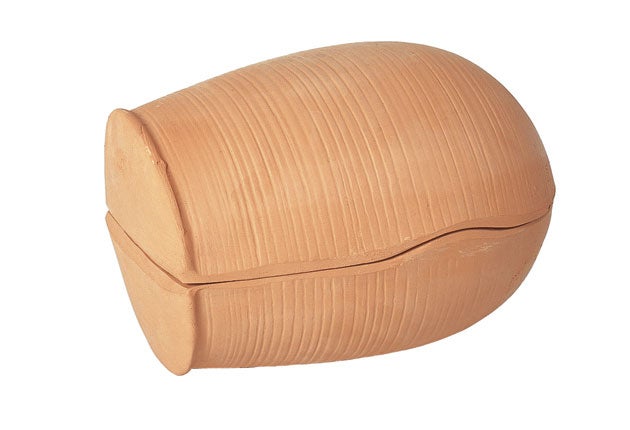The Secret History Of: The Chicken Brick

Support truly
independent journalism
Our mission is to deliver unbiased, fact-based reporting that holds power to account and exposes the truth.
Whether $5 or $50, every contribution counts.
Support us to deliver journalism without an agenda.

Louise Thomas
Editor
They can be found in many kitchens up and down the land. Most of them are probably lying forgotten at the back of hardly opened cupboards. A few are proudly out on the work top – filled with paper clips and rubber bands and that bit of Blu-Tack that you thought might be useful one day.
Rarely, it seems, is the chicken brick used for its original purpose. But hold on. Habitat, which discontinued the chicken brick in 2008, has apparently realised its mistake and reintroduced it "due to popular demand". Colin Rose, who runs Weston Mill Pottery (www.wmpot.co.uk ), says it's his most popular product after the wine rack. So clearly some people somewhere are using theirs.
"I have never ever met anyone who has anything bad to say about a chicken brick once they have used one," Colin says. "They probably had their heyday in the 1970s and we supplied them to Habitat until the early 1990s when demand seemed to wane. But they're back now and we sell loads of them."
The origin of the actual chicken brick is unclear, although terracotta pots have been used for cooking since before Roman times.
It was introduced to Britain in 1964 by Sir Terence Conran, who was also responsible for the duvet, the wok and the paper lantern, as he searched the world for products for his trendy new store on the Kings Road. It was immediately popular as a wedding gift.
So just what is so great about this pot then? Well, for the health fanatics among you, the first point is that you don't need to add any fat to the bird. A chicken brick acts like a mini-oven and will steam cook the food in its own moisture. The terracotta stores, then distributes the heat without causing the fat to burn while the dry walls mean that the meat browns as it would in a normal oven.
Rose says: "We advise that you soak the brick first but it doesn't really matter if you don't. You do need to put it into a cold oven though so the cooking time is longer than in the traditional way.
"The meat is just so succulent and moist and the skin will be crispy. The other good point is that if you are late, you can just leave it in the oven and it won't dry out."
As the brick ages it will absorb the flavours and turn darker in colour, which is totally normal. But for the same reason, you should never wash it in detergent and don't use it for fish or curries.
So go on, fetch it out of the cupboard, find a new home for the paper clips – let's face it, you don't use that juicer – and try the brick for your chick.
Subscribe to Independent Premium to bookmark this article
Want to bookmark your favourite articles and stories to read or reference later? Start your Independent Premium subscription today.
Join our commenting forum
Join thought-provoking conversations, follow other Independent readers and see their replies
Comments